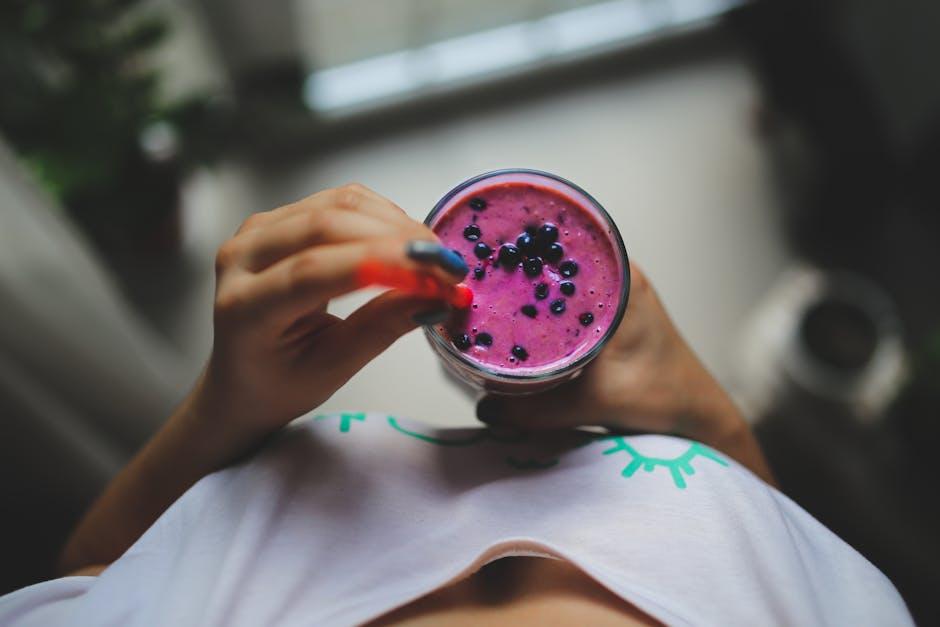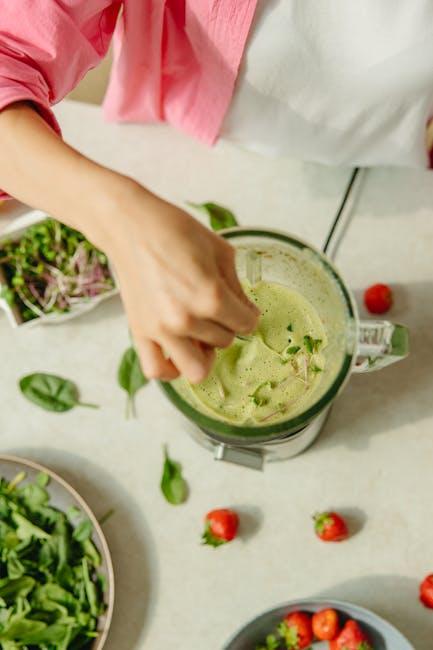In a world increasingly conscious of dietary choices and their impact on health, the rise of vegan meal shakes has promised a convenient, plant-based solution for those seeking nutrition on the go. With a myriad of brands and flavors flooding the market, it’s easy too assume that a vegan label equates to a wholesome option. However, beneath the vibrant packaging and catchy slogans lies a more complex narrative. As consumers strive to make informed decisions about their health, it’s essential to delve deeper into the world of vegan meal shakes. Are all plant-based formulations created equal? In this article, we’ll explore the nutritional profiles, hidden ingredients, and marketing myths surrounding these popular products, uncovering the truth about what it means to nourish your body with a vegan shake. Join us as we sift through the options and reveal whether plant-based truly means nutritious.
Assessing Nutritional Profiles of Popular Vegan Meal Shakes
When evaluating vegan meal shakes, it’s critical to go beyond the plant-based label and scrutinize their actual nutritional content. While many of these shakes boast an remarkable array of ingredients, not all are created equal. Here are some key nutrients to consider when assessing their profiles:
- Protein Source: Look for shakes that utilize high-quality protein sources such as pea, hemp, or brown rice to ensure a complete amino acid profile.
- Fiber Content: A satisfying shake should ideally contain a good amount of fiber, which aids digestion and keeps you full longer.
- Vitamins and Minerals: Many vegan shakes lack essential nutrients like Vitamin B12, iron, or omega-3 fatty acids—verify if fortification is included.
To illustrate the differences, we can compare a few popular vegan meal shakes. Below is a snapshot of their nutritional highlights:
| Brand | Protein (g) | Fiber (g) | Fortified Nutrients |
|---|---|---|---|
| Shake A | 20 | 8 | Vitamin B12, Iron |
| Shake B | 15 | 5 | Calcium |
| Shake C | 25 | 10 | Omega-3, Zinc |

Understanding Ingredients: the Good, The Bad, and The Ugly
When diving into the world of vegan meal shakes, it’s essential to scrutinize the ingredient list. natural sources like pea protein, brown rice protein, and hemp seed are excellent choices that offer a rich array of amino acids and essential nutrients.additionally, ingredients like chia seeds, flaxseeds, and spirulina can enhance the shake’s nutritional profile, contributing vital omega-3 fatty acids, fiber, and antioxidants.However, watch out for those sneaky fillers and additives that might undermine their health benefits. Ingredients such as artificial flavors, sweeteners, or preservatives often mask themselves under a flowery description, leading consumers astray regarding the product’s true nutritional value.
Conversely, the “ugly” side of meal shakes lies in their dependence on processed ingredients. Many brands rely on highly refined sugars and trans fats to improve taste and texture at the expense of health. Some common culprits to avoid include carrageenan, linked to digestive upset, and soy lecithin, which may not sit well with everyone. To help navigate the murky waters of ingredient lists, we can use a simple comparison chart:
| Ingredient | Classification | Health Impact |
|---|---|---|
| Pea Protein | Good | Rich in protein and iron |
| Carrageenan | Bad | Possible digestive issues |
| sorbitol | Ugly | May cause bloating and upset stomach |
| Chia Seeds | Good | High in fiber and omega-3s |

Balancing Taste and Nutrition: Finding Your Ideal Shake
When navigating the world of vegan meal shakes, achieving the perfect harmony between flavour and nutrition can seem daunting.Many brands offer a range of options that cater to various taste preferences, yet not all deliver on their nutritional promises. To make informed decisions,consider these essential factors:
- protein Source: Pea,hemp,and brown rice are popular choices. Each offers unique amino acid profiles.
- Sweeteners: opt for natural alternatives like stevia or monk fruit, and avoid shakes loaded with refined sugars.
- Fiber content: High fiber increases satiety, so look for shakes containing whole food ingredients like chia seeds or oats.
Moreover, it’s crucial to read labels thoroughly, as some products can mask their nutritional shortcomings under layers of enticing flavors. A glance at the ingredient list can reveal essential vitamins, minerals, and possible additives. Here’s a brief comparison of popular vegan shakes:
| brand | Flavor | Protein (g) | Fiber (g) | Calories |
|---|---|---|---|---|
| Shake A | Chocolate | 20 | 5 | 200 |
| Shake B | Vanilla | 15 | 3 | 160 |
| Shake C | Berry | 18 | 7 | 180 |
By assessing these components, you can select a shake that not only satisfies your taste buds but also contributes beneficially to your dietary needs. Ultimately,finding the right balance ensures that your plant-based choices are as nourishing as they are enjoyable.

Practical Recommendations for Choosing the Right Vegan Meal Shake
When selecting a vegan meal shake, it’s essential to prioritize quality over mere convenience. Here are some key factors to consider:
- Protein Source: Look for shakes that use high-quality plant-based protein sources such as pea, brown rice, or hemp. These sources provide a complete amino acid profile, which is vital for muscle repair and overall health.
- Nutrient Density: Choose shakes fortified with essential vitamins and minerals, notably B12, iron, and omega-3 fatty acids, often lacking in a vegan diet.
- Sugar Content: Beware of shakes high in added sugars, which can lead to energy spikes and crashes. Aim for options with natural sweeteners or low sugar content.
- Ingredient transparency: Read the ingredient list carefully; a shorter list with recognizable ingredients is usually a good sign of a wholesome product.
To further guide your decision, consider the specifics of each product. A comparative table can help visualize the differences among various options:
| Brand | Protein (g) | Sugar (g) | fortified Nutrients |
|---|---|---|---|
| Brand A | 20 | 5 | B12, Iron |
| Brand B | 15 | 1 | B12, Omega-3 |
| Brand C | 25 | 10 | Iron, Calcium |
By analyzing these details, you can make a more informed choice that aligns with your dietary needs and overall health goals. Remember,not all vegan options are created equal; a thoughtful approach can help you find the perfect meal shake for your lifestyle.
Closing Remarks
In the whirlwind of modern dietary choices, the rise of vegan meal shakes presents both a promise and a paradox. As we’ve explored, not all plant-based shakes are created equal; their nutritional value can vary widely, influenced by ingredients and processing methods. While they can be a convenient option for those seeking a rapid and wholesome meal replacement, it’s crucial to approach them with a discerning eye.
As you navigate the aisle of vibrant packaging and alluring claims, remember that a shake crafted from whole, nutrient-rich ingredients may serve you better than one laden with additives and sugars. Embrace the ethos of mindful eating, where every sip reflects both your values and your health goals.
Ultimately, whether you’re a seasoned vegan or simply curious about plant-based options, the key lies in informed choices. With a little research and a dash of curiosity, you can savor a meal shake that not only tantalizes your taste buds but nourishes your body as well. Happy sipping!



